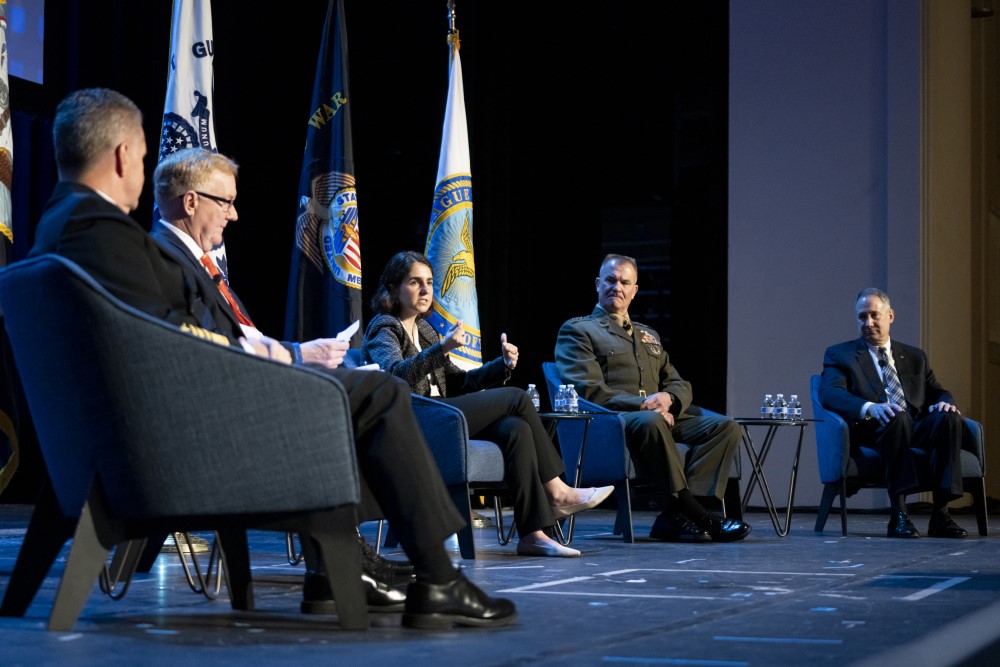
NATIONAL HARBOR, Md. — An essential aspect of the recently released National Defense Strategy is that it was developed in conjunction with the Nuclear Posture Review, which creates a focus on “integrated deterrence,” a top Defense Department official said April 5 at the Center for Maritime Strategy breakfast.
“So, when you think about the national security challenge, you also think about the nuclear challenge. It seems so obvious,” said Mara Karlin, assistant secretary of defense for strategy, plans and capabilities.
That scenario forces a more rigorous and integrated process, which also includes cyber and can apply to our pacing challenge of China and the threat of Russia, Karlin said. That leads to an “integrated deterrence” that can bring together actions that can work across all these challenges.”
Retired Adm. James Foggo, session moderator and dean of the Center for Maritime Strategy think tank, which hosted the breakfast, said he did not agree with the strategy’s description of Russia as an “acute” challenge.
Karlin explained that “China poses a geopolitical challenge and Russia does not.” Although the Pentagon is focused on Russia’s invasion of Ukraine and its actions in other regions, “that does not pose a geopolitical challenge in the same way as China.”
Also speaking at the session, Adm. Samuel Paparo, commander of the U.S. Pacific Fleet, said his first year in that command has been a “very dynamic” time. Much of the fleet is now operating in the Pacific, after the withdrawal from Afghanistan allowed it to refocusing it effort on the U.S. Central Command region to the Pacific, where it deals with the challenge from both China and Russia.
Paparo stressed how Pacific Fleet is part of a joint naval force that includes extensive involvement of Navy, Marine Corps and Coast Guard elements.
“The morale of the naval forces is high, and it is operating on a high operational level,” he said.
Paparo noted that a Russian naval group operated in the Hawaiian area last year, which warranted a “very robust U.S. response.” But asked about China as the “pacing threat,” the admiral said the fleet “operates every day as if the PRC [Peoples Republic of China] is going to attack Taiwan.”
Along with the other U.S. forces, the fleet operates in a way that “any potential adversary would look out and say, “today is not the day,” to take aggressive action.
Lt. Gen. Karsten Heckl, commanding general Marine Corps Combat Development Command, echoed Karlin’s and Paparo’s statements, calling for a “tri-service” naval force and for more integration of the national deterrence strategy.
“Everything hinges on the national defense strategy and the integration piece, [which] I think is critical,” Heckl said. “I think we need to do a better job of integrating” so it has real applicant to day-to-day operations.






